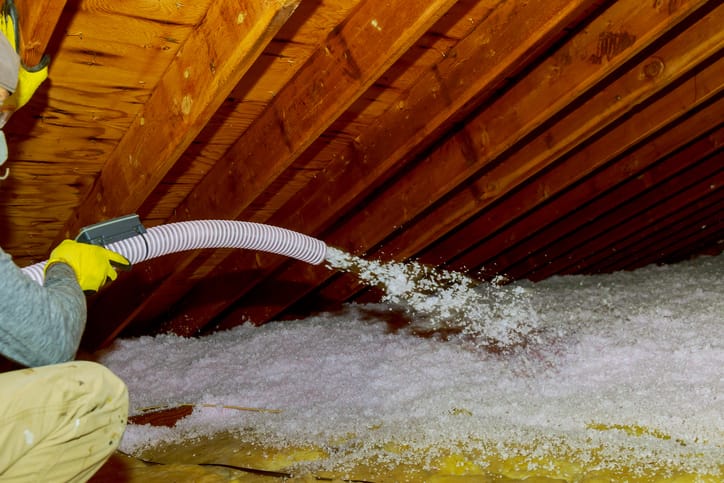When you think of adding insulation to your home, the image that pops up in your mind is the long strips of fibreglass insulation in unfaced rolls or faced batts. Batts of faced fibreglass insulation is the standard material that is used to insulate the wall and joist cavities in new construction; this significantly improves the insulation in the attics. It often involves laying a blanket of the unfaced fibreglass rolls across your attic floor.
However, you need to understand that fibreglass rolls and batts both have limitations for retrofit applications, and it wise for homeowners to consider blow-in insulation as an alternative to improving their home’s insulation R-value. The R-value is the industry standard for measuring the resistance value of a specific insulating material. Meaning the higher the R-value, the better the material it insulates.
Blow-in Insulation materials
The term blow-in insulation refers to the process of filling the joist cavities or the studs or covering the attic floors with any loose material that has a good insulating R-value. While there are a variety of materials that can be used, including loose fibreglass, or Styrofoam pellets, the most common material that is used for the blow-inapplication is cellulose material.
This material is made from recycled newsprint, wood-based material, and cardboard. It is normally treated with boric acid and other substances to make it flame resistant and also mould resistant. Cellulose is packed in tight bags or bales. Its installation involves the use of a machine blower that normally churns out the cellulose material with paddles to loosen it, mixing it with air, then blows the fluffy insulation through hoses to wherever it is required.
These are an expensive machine but can be rented out in many home improvement centers. They can also be loaned out to a homeowner who is buying large quantities of insulation. Often, the installation is normally carried out by a professional who is experienced in the process. Blow-in insulation is widely considered as the best means of adding insulation in existing construction, both for attic spaces and in wall cavities.
Advantages of Blow-in Insulation
Adding insulation in an attic is normally done by hauling unfaced rolls of fibreglass insulation into an attic and then unrolling them to form an interrupted blanket across your attic floor. However, it is important to note that this can be an exhausting process especially if you have a small hatch to access. Blow-in insulation offers a much faster way of significantly improving your attic insulation.
In a matter of hours, a professional will be able to blow a thick blanket of insulation across an attic using a single hose that runs through an attic hatch. For your wall cavities, blow in insulation is the only practical way that you can be able to improve your R-value of the stud cavities, short of removing the entire wall surface to install faced fibreglass batts.
The blow-in cellulose installation is a favourite among homeowners who prefer eco-friendly material. This is because the material is made of entirely recycled paper and wood products.
Drawbacks
When cellulose gets wet, it takes a considerably long time to dry out. Meaning that a roof leak or ice dam can saturate cellulose insulation in an attic wall or cavity. While this insulation is treated to hinder mould, the additives are not foolproof. After it gets mouldy, it becomes a long, arduous project to scoop it out into bags.
While this material is fireproof, it may be subject to smouldering in the event intense fire or heat. This is often a concern in attics, especially around recessed light fixture canisters. Therefore, before blowing in your attic insulation, it is wise to consult a professional for recommendations of how to deal with the heat issue.

